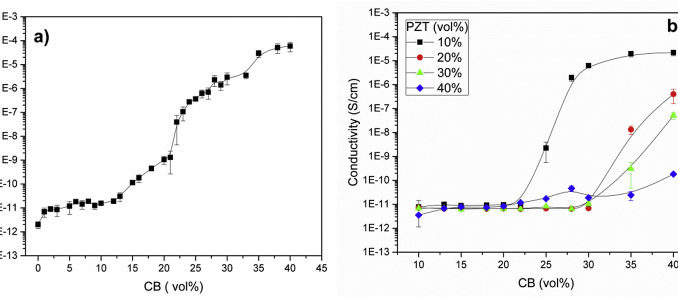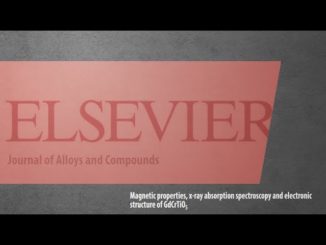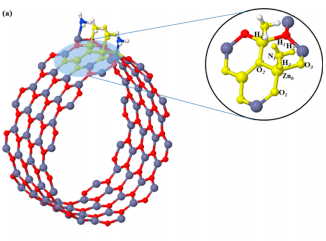
Synergistic effects on polyurethane/lead zirconate titanate/carbon black three-phase composites
Abstract: Synergistic processes in hybrid composites have frequently been described in the literature over the past few years, opening doors to new studies and applications for this type of material. In this study, three-phase composites were obtained using polyurethane (PU) as the matrix, lead zirconate titanate (PZT) as the ferroelectric ceramic and carbon black (CB) as the conductive phase. The discussion is primarily focused on a comparison of the electrical, thermal and dielectric properties of three-phase composites with those of PU_CB and PU_PZT biphasic composites. The study describes a synergistic effect between the PU/PZT/CB phases involved in the generation of charges between the particles, implying better homogeneity of the composites as well as influence over the PU crystallization. The PU_CB conductivity profile showed a phenomenon of multi-step percolation thresholds attributed to the molecular structure and repulsive surface charge of CB particles. The surface charge phenomenon restricted the percolation curve analysis of the three-phase composites by means of classic percolation theory, shown by distortion of the critical exponents. The dielectric constant three-phase composites increased gradually as a function of CB in accordance with the percolation profile.
Author(s): Foggi, Camila C.; Fabbro, Maria T.; Santos, Luis P. S.; et al.
Chemical Physics Letters
Volume: 674 Pages: 125-129 Published: 2017
DOI: https://doi.org/10.1016/j.polymertesting.2017.03.031
PDF: Synergistic effects on polyurethanelead zirconate titanatecarbonblack three-phase composites




